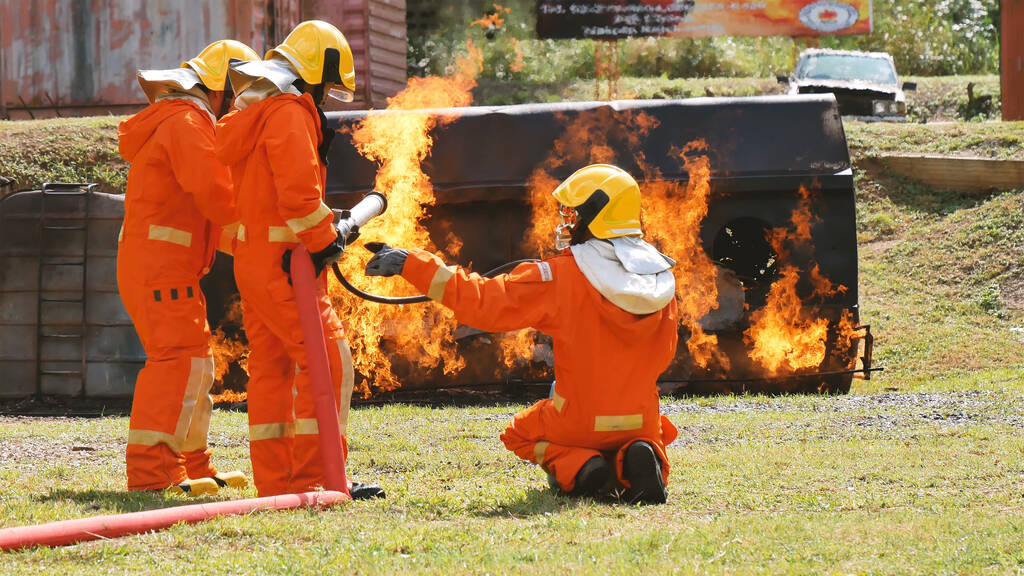
Bushfires have long been a significant threat to many regions worldwide, causing devastating losses to both human life and property. As climate change exacerbates weather conditions, the frequency and intensity of bushfires are increasing, making prevention more crucial than ever. Fortunately, advancements in technology are providing new tools and strategies to help prevent and mitigate the impact of these destructive fires. In this blog, we will explore how technology is revolutionising bushfire prevention and management.
Early Detection Systems
One of the most critical aspects of bushfire prevention is early detection. The sooner a fire is detected, the quicker it can be contained, minimising damage. Traditional methods of fire detection, such as lookout towers and patrols, are being supplemented and even replaced by advanced technological solutions.
Satellite Monitoring
Satellites equipped with thermal imaging sensors can detect heat anomalies that indicate the presence of fires. These satellites provide real-time data, allowing authorities to monitor vast areas simultaneously. This technology can detect fires even in remote and inaccessible regions, ensuring a swift response.
Drones
Unmanned aerial vehicles (UAVs), or drones, are becoming increasingly popular in bushfire management. Drones equipped with high-resolution cameras and thermal sensors can fly over fire-prone areas, providing live video feeds and detecting hot spots. They can cover large areas quickly and access locations that might be dangerous or difficult for humans to reach.
Predictive Analytics and Modelling
Predictive analytics and modelling use data to forecast where and when bushfires are likely to occur. These models consider various factors such as weather conditions, vegetation types, and historical fire data to predict fire behaviour and identify high-risk areas.
Artificial Intelligence (AI)
AI algorithms analyse vast amounts of data to predict the likelihood of bushfires. Machine learning models can identify patterns and trends that may not be apparent to human analysts. These predictions help in deploying resources more efficiently and prioritising areas for preventive measures.
Weather Forecasting
Accurate weather forecasting is crucial for predicting fire risk. Advances in meteorological technology provide detailed, localised weather forecasts that can predict temperature, humidity, wind speed, and other factors influencing fire behaviour. This information allows authorities to issue warnings and take preventive actions when conditions are ripe for bushfires.
Fire-Resistant Building Materials
Building materials play a crucial role in preventing the spread of bushfires. Advances in material science have led to the development of fire-resistant materials that can withstand high temperatures and prevent the ignition of structures.
Fire-Resistant Insulation: New insulation materials are designed to resist fire and protect buildings from intense heat. These materials can be used in the construction of homes and other structures in fire-prone areas to reduce the risk of ignition.
Innovative Coatings: Fire-retardant coatings can be applied to existing structures to enhance their fire resistance. These coatings form a protective barrier that slows down the spread of flames and reduces the likelihood of a structure catching fire.
Community and Public Awareness
Technology is also playing a role in educating the public and raising awareness about bushfire prevention. Mobile apps, websites, and social media platforms are being used to disseminate information and engage communities in fire prevention efforts.
Mobile Apps: Several mobile apps provide real-time updates on fire conditions, weather forecasts, and evacuation routes. These apps can alert users to potential fire threats and provide safety tips to help them prepare and respond effectively.
Online Resources: Websites and online platforms offer a wealth of information on bushfire prevention, including guides on creating defensible spaces, tips for fire-resistant landscaping, and advice on emergency planning. These resources empower individuals and communities to take proactive measures in reducing fire risk.

Controlled Burns and Vegetation Management
Controlled burns, also known as prescribed burns, are a traditional method of reducing fuel loads in fire-prone areas. Technology is enhancing the effectiveness and safety of these burns.
GIS Mapping: Geographic Information Systems (GIS) are used to map vegetation and fuel loads accurately. These maps help fire management teams plan and execute controlled burns more efficiently, ensuring that the burns are conducted in areas where they will be most effective.
Remote Sensing: Remote sensing technology, including satellite imagery and aerial surveys, provides detailed information on vegetation density and moisture levels. This data is crucial for determining the optimal timing and location for controlled burns.
Innovations in Firefighting Equipment
Advances in firefighting equipment are improving the ability of fire crews to combat bushfires effectively.
Robotics: Firefighting robots equipped with cameras, sensors, and firefighting tools can operate in dangerous conditions, reducing the risk to human firefighters. These robots can navigate rough terrain, access confined spaces, and extinguish fires using various techniques.
Water Bombing: Aerial firefighting using helicopters and fixed-wing aircraft equipped with water or fire retardant is a vital tool in bushfire management. New developments in water bombing technology, such as improved targeting systems and more efficient dispersal mechanisms, are enhancing the effectiveness of these operations.
Integrating Technology for Comprehensive Bushfire Management
The integration of various technologies creates a comprehensive approach to bushfire prevention and management. By combining early detection systems, predictive analytics, fire-resistant materials, public awareness, controlled burns, and advanced firefighting equipment, authorities can develop more effective strategies to combat bushfires.
Smart Networks
Creating smart networks that link various technologies and data sources can provide a holistic view of fire risk and response. These networks enable real-time data sharing and coordination among different agencies and stakeholders, improving the overall efficiency of bushfire management efforts.
Internet of Things (IoT)
IoT devices, such as sensors and weather stations, can be deployed in fire-prone areas to continuously monitor conditions and provide real-time data. This information can be integrated into predictive models and early warning systems, enhancing the ability to detect and respond to fires swiftly.
In Summary
As the threat of bushfires continues to grow, leveraging technology is essential for improving prevention and management efforts. From early detection systems and predictive analytics to fire-resistant materials and advanced firefighting equipment, technology is making a significant difference in how we address the challenges posed by bushfires. By embracing these innovations, we can better protect lives, property, and the environment from the devastating impact of bushfires. While it’s essential to be prepared with emergency kits and plans, it’s equally important to be proactive in adopting these technologies to mitigate bushfire risks. This includes everything from using drones for aerial surveillance to ensuring our homes are equipped with fire-resistant materials. Even in daily life, where we use modern conveniences like hairstyling tools, embracing technological advances helps create a safer and more resilient future. The integration of technology into bushfire prevention strategies offers a promising path forward in safeguarding our communities and natural landscapes.